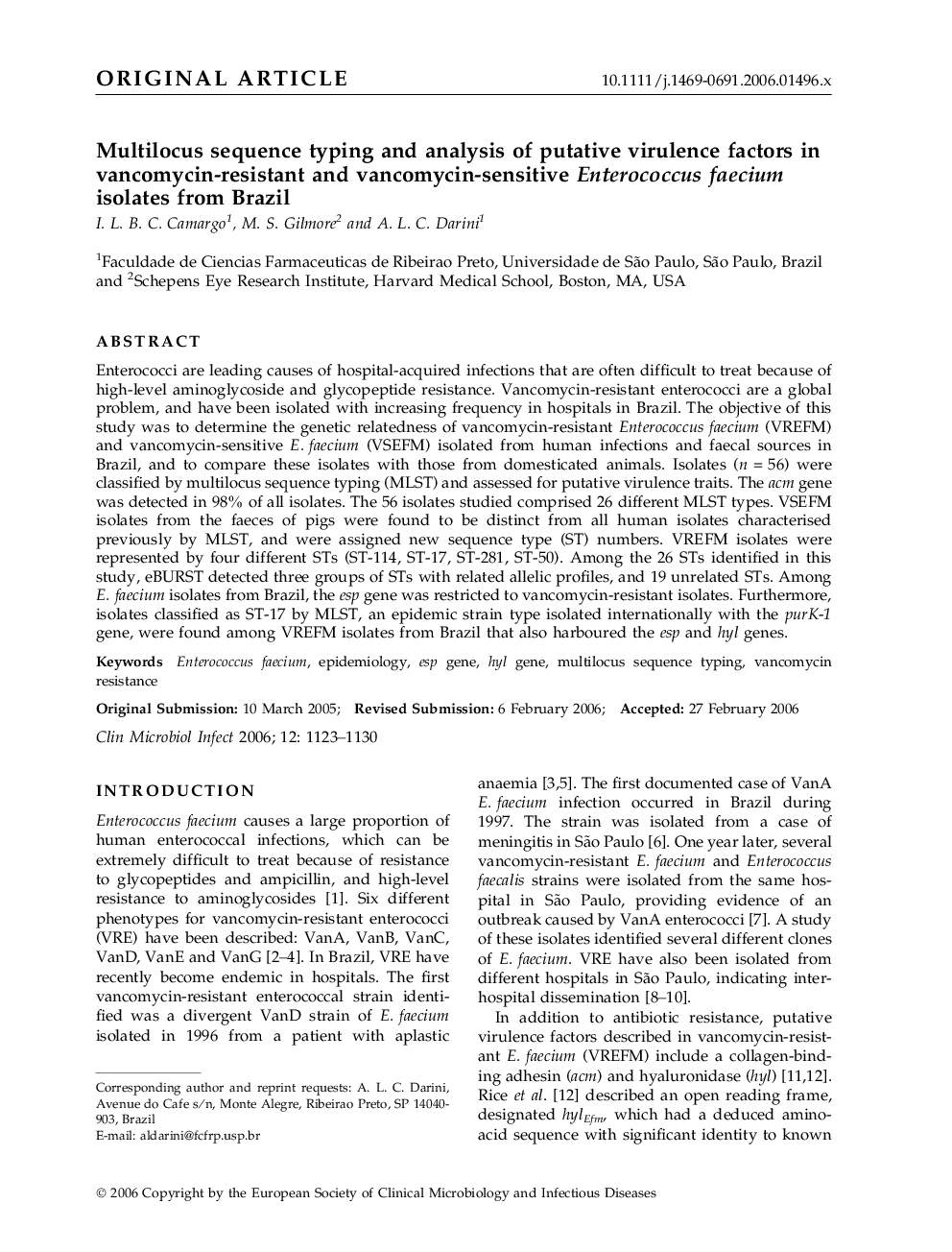| Article ID | Journal | Published Year | Pages | File Type |
|---|---|---|---|---|
| 3398804 | Clinical Microbiology and Infection | 2006 | 8 Pages |
ABSTRACTEnterococci are leading causes of hospital-acquired infections that are often difficult to treat because of high-level aminoglycoside and glycopeptide resistance. Vancomycin-resistant enterococci are a global problem, and have been isolated with increasing frequency in hospitals in Brazil. The objective of this study was to determine the genetic relatedness of vancomycin-resistant Enterococcus faecium (VREFM) and vancomycin-sensitive E. faecium (VSEFM) isolated from human infections and faecal sources in Brazil, and to compare these isolates with those from domesticated animals. Isolates (n = 56) were classified by multilocus sequence typing (MLST) and assessed for putative virulence traits. The acm gene was detected in 98% of all isolates. The 56 isolates studied comprised 26 different MLST types. VSEFM isolates from the faeces of pigs were found to be distinct from all human isolates characterised previously by MLST, and were assigned new sequence type (ST) numbers. VREFM isolates were represented by four different STs (ST-114, ST-17, ST-281, ST-50). Among the 26 STs identified in this study, eBURST detected three groups of STs with related allelic profiles, and 19 unrelated STs. Among E. faecium isolates from Brazil, the esp gene was restricted to vancomycin-resistant isolates. Furthermore, isolates classified as ST-17 by MLST, an epidemic strain type isolated internationally with the purK-1 gene, were found among VREFM isolates from Brazil that also harboured the esp and hyl genes.
